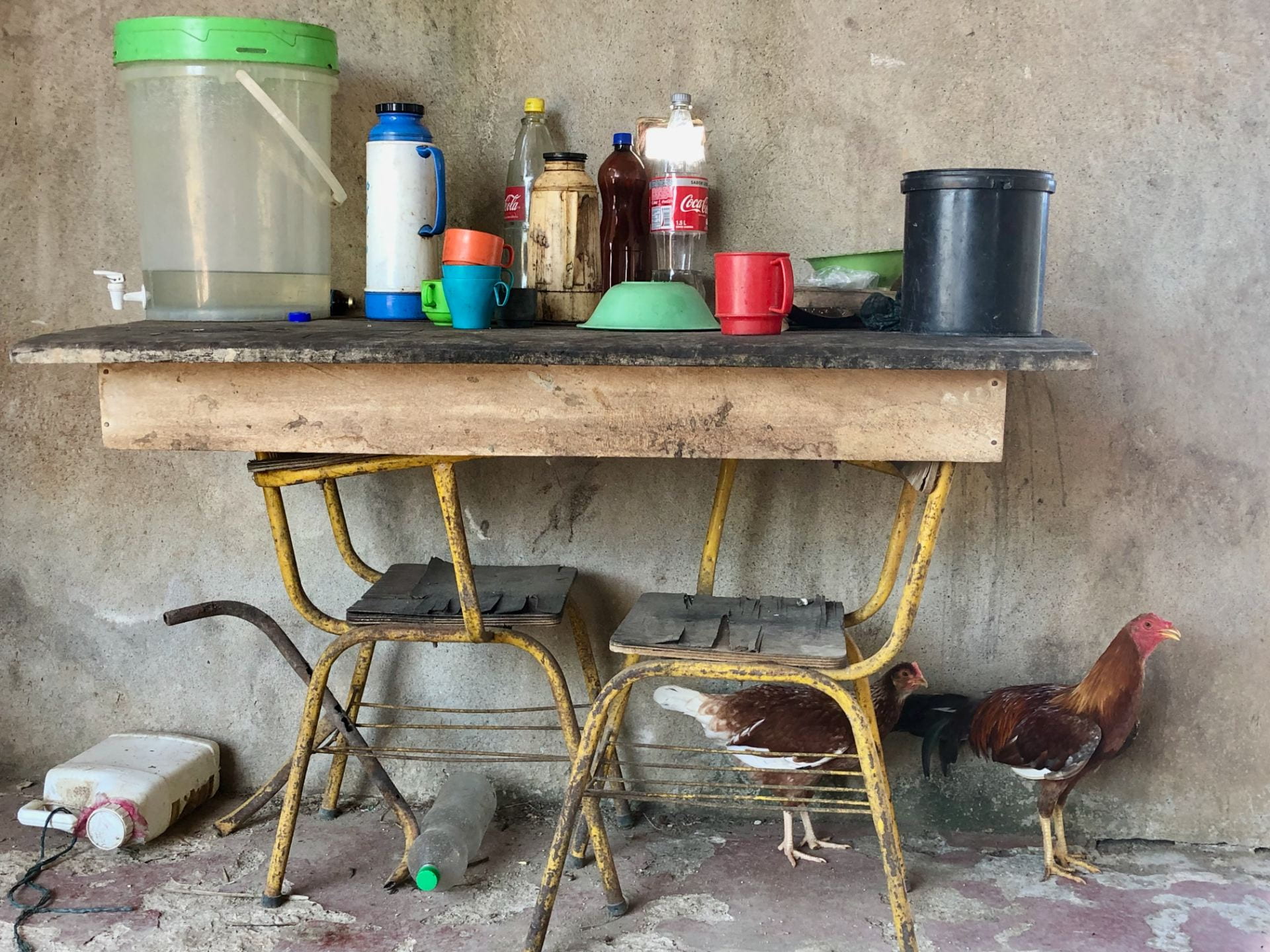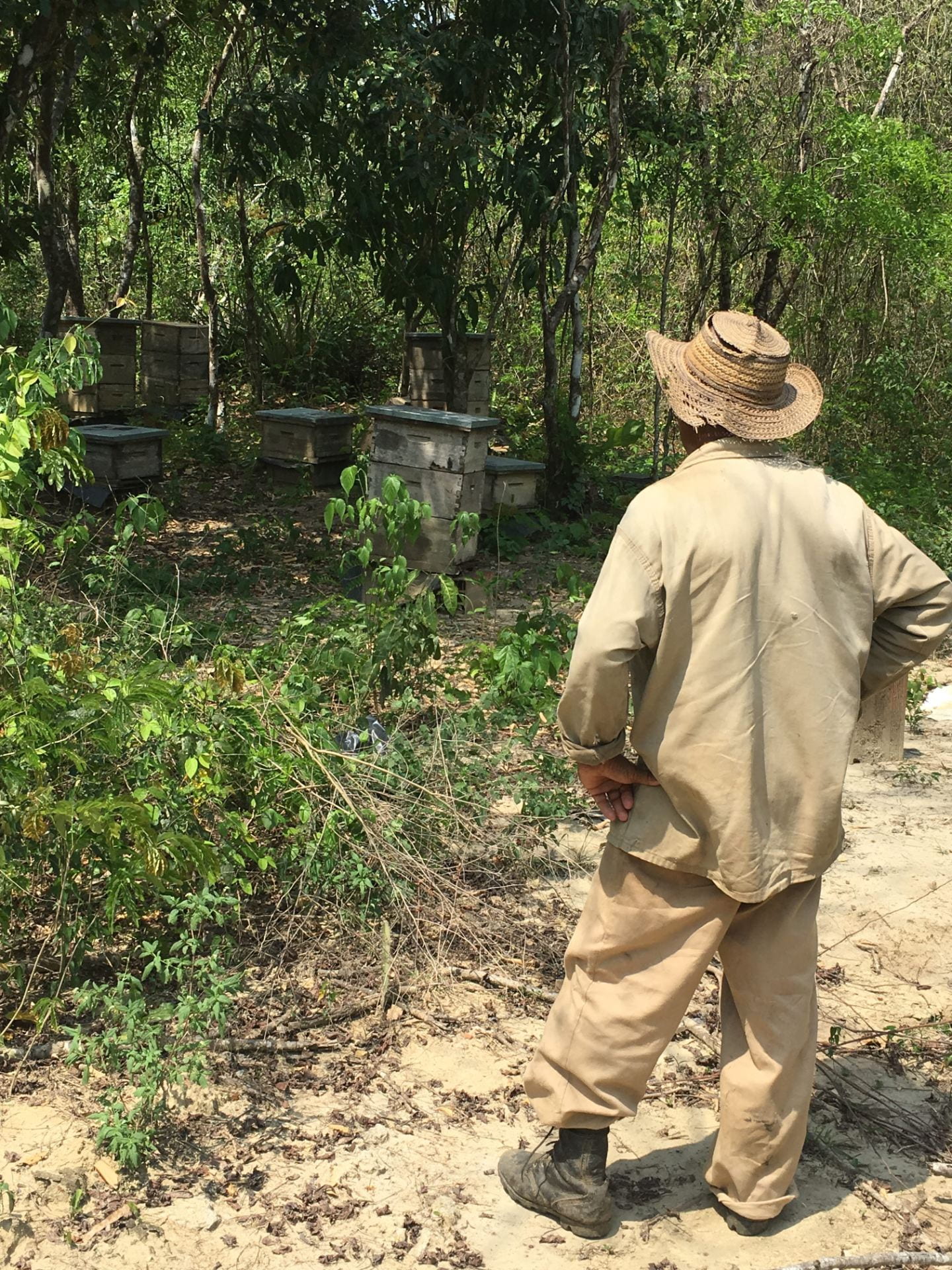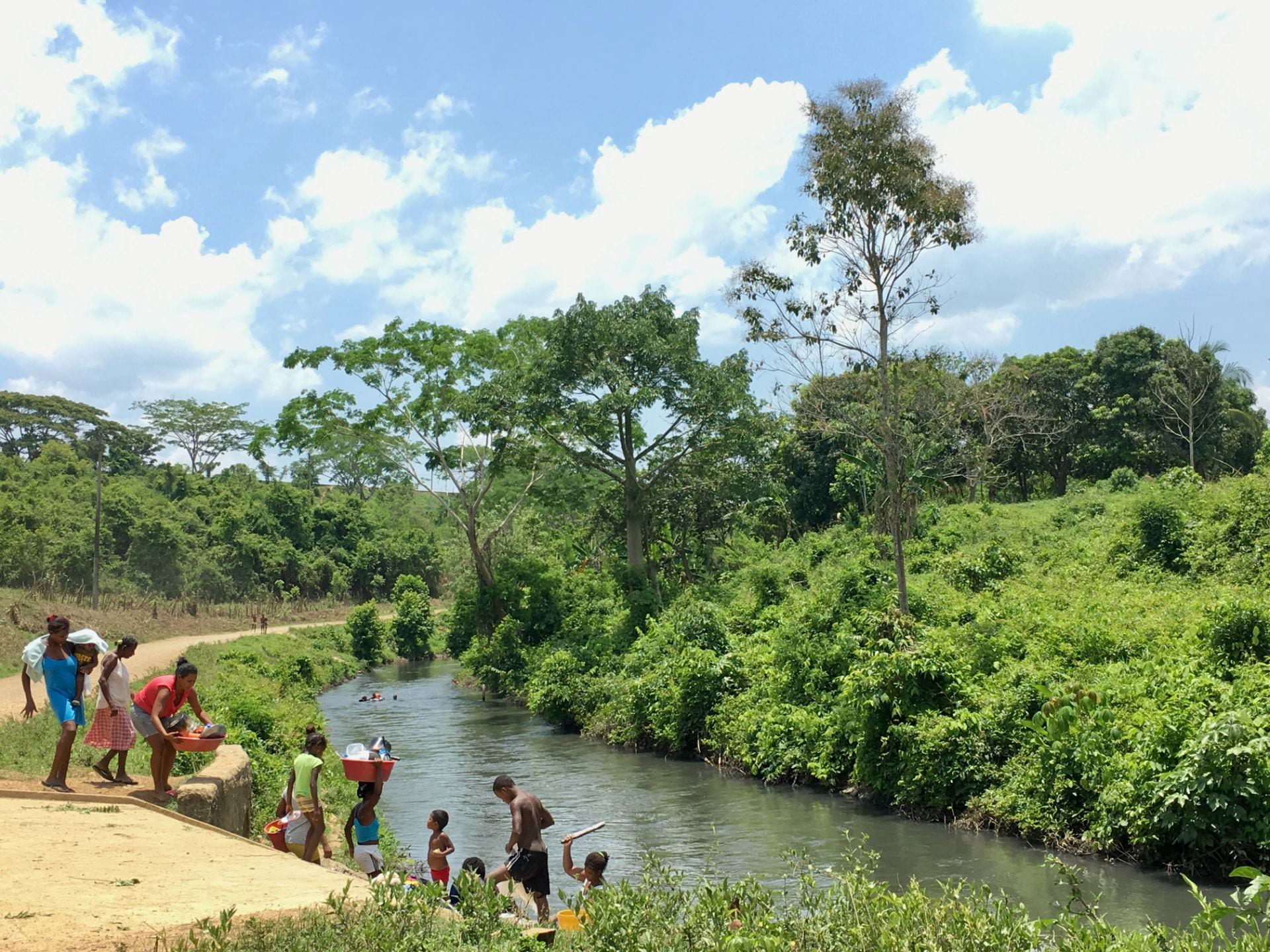Waiting for Rain
Climate Change and Social Mobility in Rural Colombia
Just before the beginning of the pandemic, I traveled to Sevilla, Colombia, to meet with Yudith Leguí, a participant in my sociological research, whom I first interviewed in 2016 in El Carmen de Bolívar, some 50 miles south of the coastal tourist town of Cartagena. In this one-stop oppressively hot and humid town near the location of Gabriel García Márquez’ fictional Macondo, I quickly spotted our meeting place, La Brisa, a restaurant donning a large mural of a Wayuu indigenous community. I was interested to talk again with Yudith and to other rural residents—like community leader Armiro Capella in the village of El Balsamo—to understand the challenges of rural social mobility. Stagnant or backsliding social mobility in rural Colombia is caused by ups and downs in the economy, climate change, limited development, the sporadic but continuing conflict—not to mention the pandemic. I wanted to listen to individual voices beyond the statistics to understand why getting ahead was so difficult.

Yudith Leguí
Yudith and her family had moved to Sevilla in hopes of a better life. When I first met her, she and her family lived in a small house they built without formal permission from the landowner at the edge of town after running out of options for making ends meet in their rural village during an El Niño drought. Her son Sergio Martinez and his family left the village a year earlier than Yudith and moved to Barranquilla. His efforts to earn enough income in the big coastal city to both support his own household and send Yudith money failed. Any hope of moving into the middle class seemed a distant dream.
Rural communities in Colombia face many challenges—climate change among them— after decades of conflict left the countryside underdeveloped compared to urban areas. Gallup World Poll data from 2010-2018 showed significantly higher subjective well-being in urban areas than rural areas. In predominantly rural areas only 39% of people assess their well-being at seven or higher, compared to 57% in urban areas. Rural Colombia is also zoned as lower class on the national socioeconomic scale ranking residential properties along a scale of stratums (this is the word Colombia uses to describe economic levels) from one (lowest class) to stratum six (wealthy). Some rural towns have zones from stratum one to three, but the countryside is primarily stratum one. Although Colombia has been rated as one of the happiest countries in the world, that happiness skews urban.
Social mobility has historically been difficult throughout the Colombian countryside. In recent years climate change impacts, in addition to violent conflict, have compounded rural challenges. The International Panel on Climate Change predicts worrisome effects in the tropical belt across the northeastern Colombian region where Yudith and her family live: continually rising extreme temperatures, more severe wet and dry seasons, drought and less predictable amounts of rainfall. Most families throughout the rural northeast are subsistence farmers. Their livelihoods are directly tied to and dependent on rain-fed agriculture and wet and dry seasonal cycles. The less predictable these cycles become, the fewer yields harvests produce. Heavy rainfalls and drought-damaged soils are more prone to insect plagues and fungi that further damage the region’s bread-and-butter tuber crops like yucca and ñame. Colombians like Yudith go to extreme efforts to improve their lives amidst this increasingly trying ecological context.

A kitchen in rural Colombia
Yudith was waiting for me at La Brisa donning a red shirt decorated with a big heart. We walked through the back of the dining area and a large patio past the pump the restaurant uses to draw water from a concrete canal leading to a flowing stream all the way up into an elevated tank to supply the restaurant. The entire area gets water using pumps from the river. When rains become scarce, individual livelihoods and businesses suffer in rural areas without formal water infrastructure.
We crossed a few small sandy roads lined with brightly painted plank houses before reaching Yudith’s home. Planter baskets hung from the wooden beams supporting her zinc roof. Sweat streamed down her face. Rising temperatures place additional strain on families’ lives and livelihoods. Studies show that extreme temperatures worldwide reduce individuals’ outdoor labor productivity, negatively impact people’s health over time and cause increased incidences of heat-related illnesses.
With these severe climatic conditions, rural Colombians with high socioeconomic vulnerability struggle to avoid backsliding into more economically precarious circumstances. In 2017, Yudith started two businesses to support her family, one selling chicharrón and cookies on the streets and another cleaning and doing laundry for families in a nearby neighborhood. Those businesses kept her afloat for about a year, but then with poor harvests in the surrounding area of Montes de María, the effects reverberated into the rural hub of El Carmen de Bolívar. When harvests are bad, families in the municipal center lack the disposable income to pay someone to clean for them or to buy a chicharrón snack on the roadside. When her businesses were no longer profitable, she and her family left El Carmen de Bolivar once again in search of maintaining their quality of life.

A mango seller operating on the formal economy, similar to Yudith’s experiences

A house in Carmen de Bolivar
With limited opportunities for upward mobility and the lack of a safety net to prevent families from sinking deeper into poverty, many rely on internal migration to better their odds at making ends meet. Yudith and her family moved many times since their original move from her native village of Vía Amalia in the Montes de María and to the urban center of El Carmen de Bolívar. From there, they moved all the way to the city of Riohacha. Then to Fundación, a town outside of Santa Marta, before settling into their current home.
Though there is a long pattern of rural to urban migration in Colombia, rural families often migrate from one rural place to another, trying to maintain their current socioeconomic status as environmental conditions deteriorate. Each of Yudith’s migrations was in search of a place where her family could afford the costs of living through a combination of agricultural work, odd jobs and minimal expenses. In Vía Amalia, where the family lived before the El Niño drought, Yudith and her husband owned their land and did not owe any bills or services. In each destination since then, up until landing in their home at the time of our interview in May 2019, the rent and some utilities were more than they could afford.
Social mobility is typically measured by generational improvement in socioeconomic status. In rural Colombia, families are often just focused on maintaining their current livelihoods. This is especially true as climate change pressures squeeze families’ farming revenue. In Yudith’s case, Sevilla offered consistent farming work on the banana plantations complemented with odd jobs that carried them through during the dry season when there was no work in the fields. They only needed to make a little bit for food and electricity since they lived rent-free. When talking about her life in Sevilla, Yudith said, “Por fin estoy en casa” (finally I’m home).
Rural residential security often depends on the support and generosity of family members. For example, though Yudith felt settled, her roots in Sevilla were tenuous. The house belonged to her brother who lived in Santa Marta and offered to let Yudith and her family live in the Sevilla house for free.
The only items inside the house that belonged to Yudith and her husband were their nine year-old daughter Lina’s Pocahontas doll, a few photos and their clothes. Everything else belonged to her brothers who stayed there whenever they wanted respite from bustling Santa Marta. Yudith knew that if her brother’s family decided to move back to Sevilla permanently, she, her husband and Lina would have to leave.

While many families like Yudith’s move in search of socioeconomic stability, other campesinos are adapting in place. Armiro Capella is the community leader in the village of El Balsamo, who is credited by residents with vision and leadership. The village is more developed than most in the Montes de María. Electric fences line pastures, roads are graveled going in and out of farms and some homes had electricity access in 2017—one of the region’s first villages to receive electrification.
Armiro explained how farmers and their families were adapting to changing climate conditions. Those who were still farming on their land shifted to more drought-tolerant crops, planting what could be harvested more quickly than tubers such as banana trees. They began raising bees and selling honey. There was more widespread investment in harvesting and saving seeds rather than planting everything each season in case of a complete crop loss. Those who still had cows were learning about sustainable cattle rotation to make pasture go further.
“We [the campesinos] are partly to blame for climate change,” Armiro reflected, “the deforestation we have committed causes these harsh dry seasons and I am sure that reforestation is critical to the continuation of agricultural livelihoods in our region.” Armiro’s optimistic outlook belies the fact that he was respectively very well off before the El Niño drought in the region and lost almost everything through adapting in place. He was unable to return to raising livestock and had barely recuperated any crop growth in 2019. Instead, Armiro was trying new things and encouraging others to do the same.
Harsh realities that require people to recalibrate their lives at the most basic level can provide opportunities for fresh thinking. Armiro’s hope and understanding that nurturing the landscape is part of adapting is a glimmer of the opportunity for more stable, climate-adapted subsistence farming forged through the fires of climate impacts.

Armiro Capella

Dried water reservoir
In the context of Colombia’s economic instability and environmental challenges in recent years, conflict recovery initiatives have been a life raft for many communities. This patchwork of social supports is holding communities together by loose threads and enabling the continuation of a fragile reliance on subsistence agriculture in an unpredictable economic and climate context. When conflict recovery programs end, households will find it difficult to maintain their current levels of economic stability. Natural-resource based income streams will continue to come up short: true adaptation to climate change requires piped water access, at a minimum.
In addition to the climate challenge, the pandemic caused economic contraction in 2020 and limited mobility for Colombian citizens during periods of 2020 and 2021. This took a toll on the informal economy and agricultural communities that struggled to move their products to urban markets. Pandemic tensions came to a head during weeks of national protest in 2021 fueled by frustrations with police violence, the economy and the pandemic response. Colombia was one of few Latin American countries that offered no widespread economic assistance or direct monetary support to families impacted by the pandemic. It was one of the most unequal countries in the world before the pandemic, and that tremendous inequality is growing unaddressed by the national government.
Rural Colombians carry the burden of constantly moving in search of opportunities and independently finding solutions for climate challenges. A more stable, upwardly mobile rural Colombia requires development of infrastructure that is adapted both for the changing economy and the changing climate. Only then can people like Yudith and Armiro truly dream of becoming upwardly mobile.

The water canal at San Onofre

Brianna Castro is a Ph.D. Candidate in Sociology at Harvard University. Her research specializes in climate change adaptation, migration, and development. Before graduate school, she served in the U.S. Peace Corps in Colombia and worked with migrant communities in the United States. @briblu | briannacastro.com
Related Articles
Editor’s Letter
Editor's Letter Upstairs, Downstairs (and In-Between)When Argentine biologist Otto Solbrig was interim DRCLAS faculty director many years ago, he commented more than once that ReVista did not feature enough photos of middle-class people. I tried to respond to his...
Paid Domestic Workers, Women and Democracy
I first visited Peru in 1995 as a graduate student and junior member of a Latin American Studies Association delegation to examine the state of democracy in that country on the…
Invisible Commutes
English + Español
Belén García, a Colombian domestic worker, wakes up at five in the morning every day in her home in the chilly mountains of southeastern Bogotá. After taking a shower, she dresses in several…



